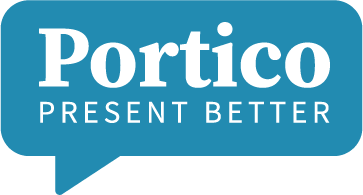It doesn’t have to be this way. Nor should it.
If we don’t invest time into making the content more interesting and relatable, we’re almost guaranteeing that the audience won’t remember much of it. When it comes to learning, we can’t force it upon others (the way a parent might compel their child to finish their broccoli). Adult learners – if not engaged and interested – will not store or process new information in a way that they will retrieve it at a later date, the precise moment when you’re hoping behaviors change.
While you might be able to check off a box that the training was completed, that only covers you from an administrative or legal angle. If you want them to remember and apply what you’re sharing, it’s up to you to package it in a way that they’ll care, remember and if necessary, take action. Otherwise they have too many competing priorities and distractions that will prevent the knowledge from taking root.
How can you caffeinate required material in your presentations?
Uncover the story. If you don’t know the drivers behind the directive, find out the back story (with permission): What happened? What was at stake? How did it come to to take this form? What was the tipping point?What will having this information do for them? What parts of their jobs will be easier/ less risky?
You can convert the driest policy change into a storytelling experience – which makes it a richer and more memorable for your colleagues.
Switch from Passive to Active. By the time you’ve received approved copy from legal and corporate communications it can be . . a bit dry. Make sure that wherever possible, you’re replacing the passive voice with an active one. Pair actual people with policies and ideas (again, with permission!)
Use the presentation to communicate the value of the policy, not its details. While you don’t have to go over every sub-bullet on the new vacation policy, you do need to sell them on the value of knowing the policy and to give them direction on where they can read all of the information in more granular form. Even if the audience wants all of the details, they are limited by how much they can absorb in one setting. Give them a map of where and when to find information as they need it.
Start with Q&A. If you’re not sure how your colleagues feel about an issue, or what they want to know, get them talking. Hearing their perspectives will help you prioritize the information you’re about to share. This requires having a good handle on your content so that you can adjust – or at least let them know which answers you’ll be covering and which ones you’ll have to get back to them on. It will also energize the room by bringing the audience in immediately. They’re more vested in the material you’re about to present, and you’ve given them insight on what their colleagues care about. Bonus points if you provide a read ahead for people to react to in the meeting.
Finally, my question for each and every presentation: Can you communicate the information in another form? It takes a lot of time to schedule meetings, record webinars and create slide decks. If the information flow is one-way, everyone is better served with a well written document.
If you want to get reactions, start a conversation and provide an opportunity for colleagues to ask questions and learn from one another, then by all means, go forth with a presentation. A good one.
Salud!
Meghan



